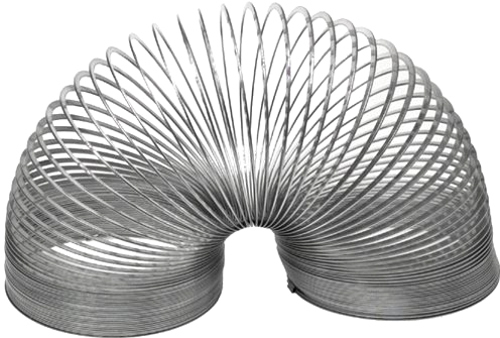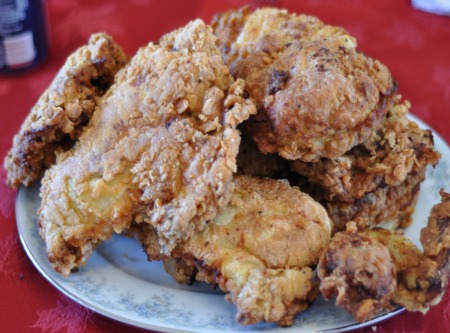To brine or not to brine – that is the question.
First – what is brining?
Brining is the process where you place some food in a hypertonic saline solution (salty water) sometimes with sugar and occasional herbs and spices.
What is it suppose to do?
It is suppose to increase fluid so that the food is moist when you cook it.
How does it do that?
Here is an answer by Harold McGee
“Lots of cooks swear by brining because it does give you moister, more tender meat. Salt gets absorbed by the muscle tissue, loosens up the fiber proteins, and helps them retain water as they coagulate during the cooking.
I don’t brine because I feel that the collateral damage it does outweighs its advantages. Brining makes it harder to get a crisp skin (the skin retains water too), leaves the cooking juices too salty to use for sauce or gravy, and gives the breast meat the texture of deli turkey breast rather than roasted turkey breast, bouncy like a brine-cured ham. Not what I’m looking for on Thanksgiving.
So I skip the brine (which takes days to penetrate a big bird) and monitor the breast temperature so that it doesn’t get above 150 degrees. Then it’s juicy with turkey juices, not tap water and salt. “
Does the other stuff – herbs, spices, sugar – get into the meat?
It does bind to the surface of the meat, and the surface of the meat is where the majority of the flavor is. The molecules from these are too large to get through the cell membranes. But as they are exposed to the surface of the meat, they can form chemical bonds to the meat, and when the meat is cooked they remain providing flavor. That combined with the Maillard reaction makes a delicious flavor.
What about osmosis?
All cells have semi-permeable membranes that are subject to osmosis of water. They work to equalize the molecules (all molecules) on both sides of the membrane. So imagine two compartments separated by this membrane. On one side is a solution of 0.9% salt solution (9 grams of salt per liter) and on the other side is a 0.95% salt solution. Water will travel from the weak solution (0.9%) to the stronger solution until both sides have an equal solution (both will be 0.925%).
Brining doesn’t work by osmosis of just salt solution, because if it did – meat would dry out, it would not moisten.
Because of brining worked by osmosis then it would be better to start with lower concentrations and/or brining times.
The Science of What we Know:
Most meat, fish, and poultry – having come from the sea, have a consistent amount of salt in tissues is about 9g/L which converts to a 0.9% salt solution.
Contrast that with saltwater in the oceans that has a salinity of ~3.5%. This approximates at 35 gm of salt/ 1 Liter of water (most of the salty in the ocean is sodium chloride, but there are other salts).
When you look at brines recommended by Cooks Illustrated it is 5 oz. of salt / quart of water:
5 oz. = 142 gms. / 0.909 L = 156.2 gm/L or a 15% brine solution.
Its the Protein:
When you think of proteins- think of a slinky.

The wire represents strings of amino-acids, and the inside is the area where water is trapped
Proteins are molecules of amino-acids that are strung together like pearls on a string. But not just long strings- they tend to form three dimensional shapes- they fold on themselves depending on the charge of the molecules, the salinity, the temperature, and the pH.
Some parts of the protein attract water, some parts repel water. In our protein-slinky model the inside of the slinky is where water is loved, and kept. The tighter the slinky the less water. The looser the slinky the more water can fit, until the slinky is too loose and water escapes it altogether.
Heat causes water loss from proteins in two ways: heat from about 140 degrees F causes the slinky to become tight so water is forced out, and heat above 160 degrees causes the molecule to relax totally – and all the water is left out.
Heat and Proteins:
If you heat the protein it is like the slinky unravels or stretches out. Pull that slinky (protein molecule) apart far enough, and all the water inside leaves the protein. For proteins in meats, that unraveling, or the point where water escapes the protein is about 160 degrees F (71 degrees C).
Apply that to cooking- when the internal temperature of meat is 160 degrees or more the protein molecules are losing water, and if parts of the meat gets above 212 degrees F, they will convert to steam – leaving meat dry and tasteless. Overcook meat – and all the sauce in the world is something you can’t choke down.
Part of the reason Sous Vide cooking allows meat to stay moist is that you can precisely control the temperature of the meat, allowing it to remain at a constant temperature, below the point of where the molecules of protein will unravel.
No matter how complex the protein is – you heat a protein and it will unravel to the point of losing its water.
Sodium Chloride and Proteins:
If you add enough salt to proteins they will also unravel. You can dry out meat using salt- and you can protect against bugs by salting meat (it was probably the first preservative). Too much salt, no bacteria, parasites, fungus – because you will get rid of all the proteins. Want to make jerky – you can dehydrate meat (get rid of the water) or salt small strips of it (using osmosis to pull out all the water from the meat).
Sodium Chloride, more water, and proteins:
Now I want you to imagine lots of slinkies put together and bound with cords so they can only expand so far. Meaning- there is only room for a bit of water, because the skinky cannot unravel enough to accommodate more water. Add some sodium chloride to the molecule and it allows the slinky to open enough to accommodate more water. For purists – it is more the chloride molecule than the sodium.
This is what happens in muscle. At normal salt concentrations (0.9%) muscle (the parts of the creature we love to eat) are held tightly together. Increase the concentration of salt slightly and the muscle molecules open up more, allowing more water to flow into those cells.
But it just affects the first centimeter or two of the meat- not the entire meat.
Meat proteins, slow cooking, barbecue, and sous vide
The precise biology muscle include molecules with names like actin, sarcomeres, myosin – all of which have different points of charge, and require different forms of cooking. Uptown cuts, like steaks and chops have rich muscle cells that can be cooked fast and high heat to give a great surface Maillard reaction and then downtown cuts, like brisket require slow heat over a long time to slowly break down those molecules to keep them soft. Again, sous vide cooking is precise and works well, my Native American ancestors discovered slow cooking with smoke worked well – adopted by some of the poor folks from the south who couldn’t afford the good cuts, and used the Native American barbecue methods to produce great ribs. Want to lose a barbecue competition – lose track of your temperature or let it creep up too high too long. Those tough fibrous collagen molecules denature with slow applied heat over time (or as they like saying in the south “low and slow.”
Brining does not prevent water loss from overcooking:
No matter how much you brine or how long you brine, brining will not prevent water loss due to shrinkage during cooking. So if you want to race over-cooking with brining, overcooking will dry out the meat every single time.
This brings us to turkey:
Have you ever tried to brine a whole bird? Arg. I have done it – although now the easiest way to make turkey for thanksgiving is to break the turkey down (butcher it into breasts, thighs, drumsticks) – then if you want to brine it- it makes it easier. Or- sous vide it- a better option for the best turkey. I still prefer to salt it- whether I make turkey in the traditional manner or sous vide style.
So how to make fried chicken?

Ok – lets get to the all important step of how to make fried chicken. I like how Michael Ruhlman makes his chicken with a single exception: he fries his chicken first, then finishes it in an oven at 200 degrees. The longer you leave the chicken in the oven the more likely it is that the internal temperature will rise above 160 degrees and the chicken will be overdone. Will brining prevent that — no.
So, I don’t brine the chicken – but I do salt it heavily.
Ruhlman modification method is this – first make the chicken Sous Vide style (see video below) then you have completely cooked, moist chicken, then you fry it. The advantage of sous vide cooking is you have the chicken ready anytime- and all you have to do is fry it quickly and it is ready to serve. So here is my sous vide video and below is Michael Ruhlman’s video
Part one is Sous Vide the chicken
And just because you should see his video doing it- here is that method. I love the Le Creuset deep skillet for this- and highly endorse that.
